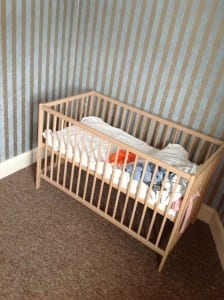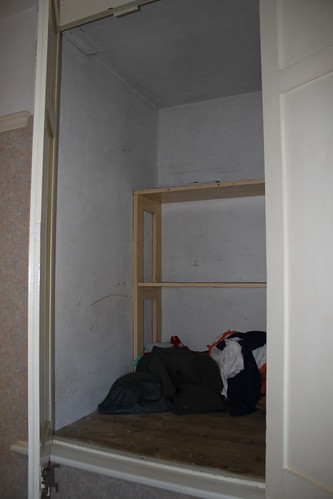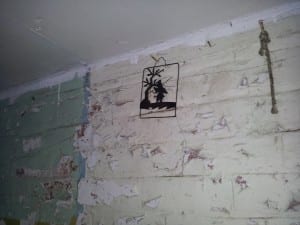For me home is a place where you feel safe and comfortable, not only in your surroundings or company but also within yourself. It is a place where you can be yourself without fear of judgment, where you can do and say the things that others might not appreciate or understand…even if you are only saying them to yourself. I think this is why I am most drawn to the CCTV room on our site- because it breaches the contract of safety and privacy I associate with a home. As I mention in my ‘Meet the residents’ section, the CCTV room makes me feel slightly omniscient, and I’m not sure I like that. We have all heard stories or seen films where CCTV is used in a perverted manner to breach privacy or capture some horrific and disturbing ordeal. These influences make it very easy for us to see ourselves using the CCTV in our performance to create negative or disturbing scenes and use them to inject a sense of unease or fear into our audience.
Image by Jozey Wade 2013
But what if we contradicted the norm? What if we used the CCTV to capture the normal, funny, peculiar little things we all do when we think no one is watching. Again, as I mentioned in my ‘meet the residents’ section, “I have always found human behaviour fascinating, so having the opportunity to see how others behave in an environment where people watching is normally prohibited is exciting: especially when the environment is as intriguing as its inhabitants”. Because you can deny it all you want, but we all talk to ourselves, we all dance like no one is watching, sing like no one can hear you and apologize to inanimate objects for bumping into them. We all do these things when we are alone (and I have only listed a few things) and our guard is down. We do them in a place that we associate with safety and ONLY when we are sure no one is watching, because for others to see us act like that would make us vulnerable.
I believe that scene’s like this could be used very effectively used to create a mood or atmosphere in our performance. They are comic because every one can associate with them: but is it not also disturbing knowing that someone has seen you do those things that no one else is meant to see? Could it instil a sense of panic in the audience who hope no one has seen them like that? Could we watch and see how many people admit to having done the same thing once they know another person has? And would it not contrast nicely with a live performance of a completely different topic or nature?
I know I earlier spoke against using the CCTV for darker scenes but could it be shocking to see one innocent scene turn into one of domestic violence? What if the person on camera wasn’t just talking to themselves in a seemingly empty room?




